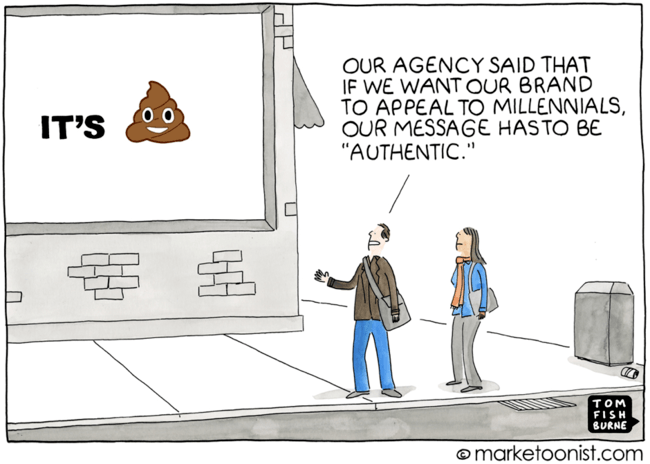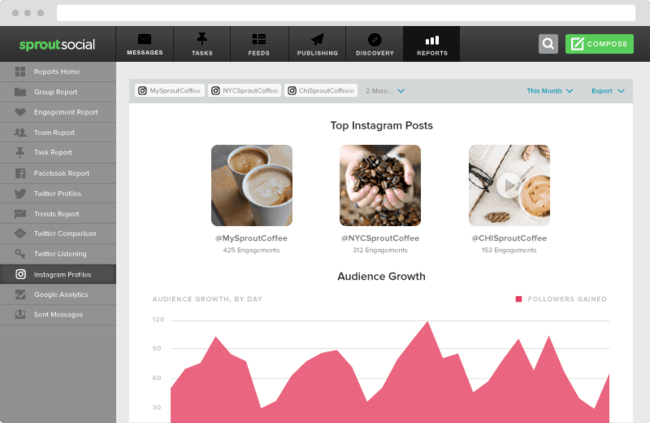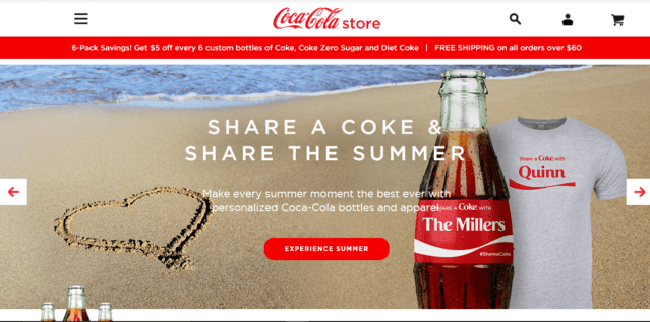User-generated content is essentially any content created by unpaid contributors or users. It can include anything from pictures, videos, and blog posts to testimonials and comments on discussion boards.
User-generated content is typically created or uploaded online, where it is easily shared.
But why is UGC such a big deal? And why are corporations spending millions to try and push users to create user generated content?
Well, here's why:
User-generated content allows you to build customer interaction and turn happy clients into promoters. Social media is a great tool when gathering awesome pics, videos, tweets, and posts about your company, products or services.
Creating your own “social hub” can drive sales to your business.
Before you decide to build your own social hub, it’s important to take a look at how other companies have generated and marketed user-generated content successfully.
Approaches to User-Generated Content
There are four methods by which you can rank and assess UGC: community-based, user-based, designer-based, and hybrid.
Here are some standard definitions of what each of these approaches are:
- Community-based approaches rely on establishing ground truth based on the wisdom of the crowd regarding the content of interest. The assessments provided by the community of end users is utilized to directly rank content within the system in human-centered methods. The machine-centered method applies these community judgments in training algorithms to automatically assess and rank UGC.
- User-based approaches emphasize the differences between individual users so that ranking and assessment can interactively adapt or be personalized given the particular requirements of each user. The human-centered approach accentuates interactive interfaces where the user can define and redefine their preferences as their interests shift. On the other hand, machine-centered approaches model the individual user according to the explicit and implicit knowledge that is gathered through system interactions.
- Designer-based approaches primarily use machine-centered methods to essentially maximize the diversity of content presented to users in order to avoid constraining the space of topic selections or perspectives. The diversity of content can be assessed with respect to various dimensions, such as authorship, topics, sentiments, and named entities.
- Hybrid approaches seek to combine methods from the various frameworks in order to develop a more robust approach for assessing and ranking UGC. Approaches are most often combined in one of two ways: the crowd-based approach is often used to identify hyperlocal content for a user-based approach, or a user-based approach is used to maintain the intent of a designer-based approach.
Let's dive into some real examples of how well-known brands around the world push users to generate UGC:
1) Burberry
Burberry is a British clothing company that was founded in 1856. The company decided to launch a user generated content strategy as a goal of changing Burberry’s aging brand. The company launched The Art of the Trench website in 2009, where users could upload and comment on pictures of people wearing Burberry products. Burberry’s ecommerce sales surged 50% year-over-year following the launch of the site.
2) Coca-Cola
To help boost awareness, Coca-Cola created the “Share a Coke” campaign, throughout which the company produced Coke bottles with customers’ names on the labels. The company attributes the campaign to a 2% increase in all U.S. sales after over a decade of declining revenues.
3) T-Mobile
T-Mobile found an awesome way to create user-generated content while also sending a shot at their competitors. They created an app which allowed people to “send a break-up letter” to their previous carriers. Annoyed customers sent over 113K letters, the app reached 2,7MM+ page views. The whole campaign generated over 67MM social impressions.

Having users contribute to your content creation efforts has another interesting advantage, as consumers are more interested in hearing the views of their peers than reading cleverly written sales messages.
According to Bazaar Voice, 64 percent of millennials and 53 percent of baby boomers want more options to share their opinions about brands, while other studies show consumers trust user-generated content more than all other forms of media.
Why UGC is So Successful
Customer-orientated businesses are on the rise because companies constantly have to keep up with the changing trends of their audiences. In this fast-paced, digitally-run world, attention-spans can be snapped away with the click of a finger. If brands aren’t listening solely to their customers, their customers will simply find another brand that is.
Online users are become increasingly savvy in identifying companies that are using slimy and unethical marketing tactics, and which ones that are being transparent and legitimate.

Authenticity is so important in today’s online world. Customers are no longer the passive consumers led by TV commercials and billboards. Instead, they’re active choosers and want a say in who they do and don’t buy from. But how do they choose who to buy from? They opt for brands that have the same values as them, brands that they can connect with on a personal level, and brands that “get them.”
One way marketers are approaching organic reach is through customer advocacy. By relying on customers and their followers, brands hit home with marketing efforts more effectively. One of the best ways to push customer advocacy is through user-generated content.
Turning your customers into advocates through user-generated content can seem like a challenge but taking measured steps can send you in the right direction. Follow these five steps get started:
Five Steps To Get Started
Step 1: Choose the Social Networks Most Effective to Your Campaign
It’s extremely important to not just know where your audience lives on social, but where your potential advocates could have the most influence. You don’t want to jump straight to Instagram because it’s easier to share visuals with your customers.

The social network you choose should be based on your goals and target audience. A 2016 Sprout Social Index found that 75 percent of consumers will share a positive experience with a brand. Consumers are also 70 percent more likely to make a purchase with a company after a good interaction.
This shows that no matter the social network, a good interaction or positive experience does wonders for your brand. User-generated content doesn’t have to be difficult. It’s just a simple process of asking to repurpose customer content for your brand.

Step 2: Set Specific User Generated Content Goals
Just like any other content strategy, your user-generated content plan has to have specific goals and guidelines to work its best.
According to SEMrush, 86% of businesses have tried user-generated content. User-generated content sometimes sparks conversations, increases engagement and builds trust. But if used the wrong way, this content will have your followers packing up and leaving.
That’s why you have to–like any sort of marketing campaign–create goals. Here are some common user-generated content goals marketers set in place:
- Higher Brand Engagement: Everyone wants more likes, but setting engagement as a goal is smart during UGC campaigns. Influencers tend to spark conversation with their content. Seeing more comments, likes and mentions toward your channels show signs of success. But you need the right social media analytics tools to benchmark your efforts!
- Increased Conversion Rates: Need to reassure consumers’ purchasing decisions? UGC has the power to help consumers on the fence with your product. If you’re in even a slightly competitive industry–people will do their research. Make it your priority to increase conversions with reviews, unboxing showcases and social media takeovers for your campaign.
- Building Brand Trust: Another common goal is simply getting folks to trust you. Whether you’ve had some bad press or you’re starting fresh, building brand awareness through trust is a great goal. So how do you measure it? UGC establishes credibility with consumers, so try to track keywords or phrases you know are associated with your brand. Then track and measure to see if people are giving more positive feedback on social or even on reviews.

- Educating More Users: Start by tracking common questions and concerns about your business on social media. By listening to conversations, you can measure whether the same questions are being asked before and after your UGC campaign. Influencers do a great job of cutting through and providing a clear answer.
- Save Time on Content Creation: If your team is in need of more social content, UGC can help save a lot of time. By aggregating hashtags, comments and photos, you save time in the creation process.
Step 3: Tell Your Audience What Content You Want
If you’re not flat out telling your audience to participate with user-generated content, how else will they know? Make it clear and specific what types of content you’re looking for and what aligns best with your brand.
Whether you’re asking for images or customers’ thoughts, your advocates need the proper guidance. Without a clear goal and ask of your audience, you might confuse users or get a ton of the wrong content.
Try to be as specific as possible with brand rules and regulations toward user-generated content. If you want people to send content to you, more than likely they will. But how much of it is usable if you didn’t state clearly what you wanted? It’s also important to not lose your focus. If you want a specific style of content, don’t revise or change your plans after a few short days.
Getting people to share user-generated content with you takes time. If you rush it, you could end up creating a negative experience. What’s worse is without good guidelines or content specifics, you’re extremely susceptible to internet trolls. Make sure you check hashtags and your guidelines to leave little room for errors.
Otherwise, you’re giving trolls a chance to use your words against you. Simply be smart and take your time with user-generated content
Step 4: Focus on the Community Aspect & Collaborate
The best thing about user-generated content is it typically sparks engagement. That means you have to put emphasis on building your community. As a community manager, you have to create a persona for the brand and connect customers and advocates.
User-generated content brings the chance to connect with new people through conversation. Your whole point is to build credibility. And if done correctly, you’ll drive users down the marketing funnel. A great way to do that is to use sports to connect different communities.

Your followers are extremely important to your social media strategy, so treat them well. Answer questions, give recognition, be there during product launches and show your human side. Users know there’s someone sitting behind the screen, so give your brand a personality that engages.
Don’t treat social media engagement as a chore, but instead as an opportunity.
Don’t Take Without Asking
It should go without saying, but far too often, brands think they can simply take images from a site and give credit to the photographer or influencer without any agreement. This is wrong.
Always make sure you’re in agreement with users before you share their content. As this viral story goes, it’s not fair to take people’s hard work and use it without paying or agreeing on something first.
This doesn’t mean you have to pay for every piece of user-generated content. However, if someone asks for a payment, you can either work out an agreement or look for users who would be willing to trade for the exposure. Just always remember to ask before sharing and don’t be shocked if they ask for money.
Step 5: Analyze & Measure Your User Generated Content Efforts
We’ve said this already, but let’s bring it home. If you want your user-generated content strategy to work, you have to measure it. No matter what you choose for goals or how you plan your attack, you need to benchmark.

With Sprout Social, you have social media analytics tools to track your overall engagement with user-generated content. Whether you’re posting to Facebook, Twitter, LinkedIn or Instagram, you have access to detailed audience reports.
UGC is becoming very advantageous for businesses looking for new opportunities to reach the masses. Here are some additional opportunities UGC provides:
- The companies could use social media for branding and set up contests for the audience to submit their own creations.
- The consumers and general audience members like to engage. Some have used a storytelling platform to both share and converse with others.
- To raise awareness, whether it be for an organization, company, or event.
- Gain perspectives from members that one wouldn't otherwise get to engage with.
- Personalization of the content put out; 71% of consumers like personalized ads.
- E-WOM (electronic word of mouth) will spread quickly and efficiently with social media.
- It encourages more engagement with its users and doubles the likeliness that the content will be shared.
- It builds trust with consumers. With a majority of consumers trusting UGC over brand provided information, UGC can allow for better brand-consumer relationships.
- It provides SEO Value for brands. This, in turn, means more traffic is driven to the brand's websites and that more content is linked back to the website.
- It reassures purchase decisions which will keep customers shopping. With UGC, the conversion rate increases by as much as 4.6 percent.
- It increases follower count on various social media platforms.
As hard as it might be to accept, you are not your own best salesperson. Your customers are. Knowing this means prioritizing UGC at two strategic levels: social media and omnichannel marketing.
Brands that focus their efforts not on selling themselves but on encouraging their customers to sell them can achieve what traditional marketing methods fail at- building trust, earning credibility and selling more.
Featured image






Comments 0 Responses